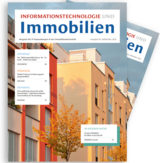Planning and control from a single source
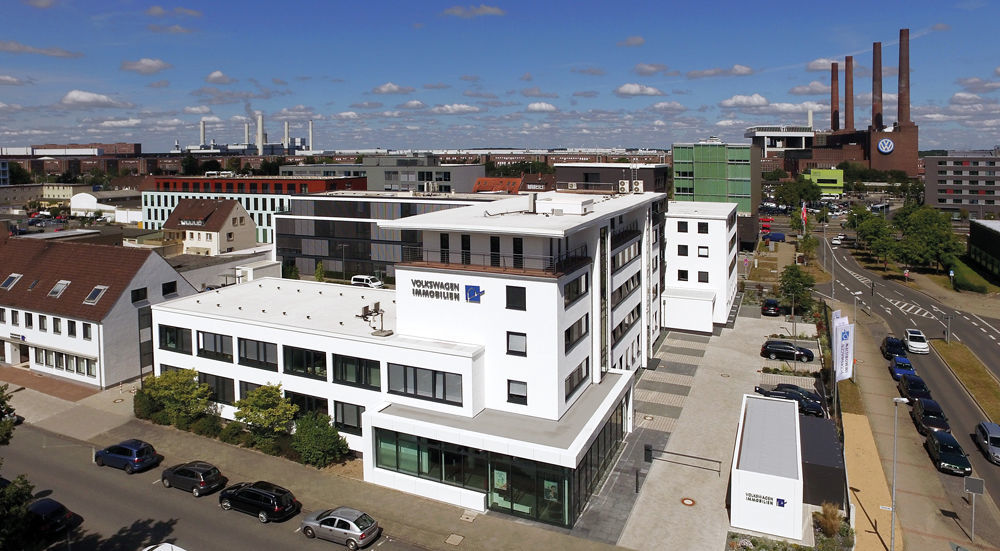
Volkswagen Immobilien GmbH (VWI), a wholly-owned subsidiary of Volkswagen AG, manages around 9,300 apartments at the Group headquarters in Wolfsburg as well as approximately 370,000 square metres of commercial real estate throughout Germany. 365 employees generate around 158 million euros of revenue. In the residential area, tasks include property management as well as estate agent services, while, in the scope if corporate real estate management (CREM), project development, property management and contract management are added to this. Group rental processes for buildings and floor space are also processed via VWI. The company reports to both Volkswagen AG and Volkswagen Financial Services AG, who each work with their own reporting structures.
Even before implementing “Plato”, VWI used SAP® ERP 6.0 with the RE-FX property management system version as well as SAP BW for reporting. At the same time, a parallel structure was in place with individual Excel spreadsheet calculations and an SQL database for planning. Here, orderly authorised access was lacking. As a consequence, step-by-step planning with reference to a standardised source was difficult and the data entered was available to anybody.
Planning tool for efficient controlling
The focus of the VWI conversion to “Plato” was on merging planning and controlling. This solution was realised on the basis of SAP BW and its integrated planning (SAP® BW-IP) as well as the Excel-based frontend tool SAP BusinessObjects Analysis (Figure 2). VWI’s planning covers 14 different cycles distributed throughout the year (one for business planning, one for multi-year planning and twelve monthly forecast planning cycles), each of which is built upon its predecessor and, at regularly intervals, is aligned to the plan created at the beginning of the year with the updated actual data. These individual planning cycles throughout the year now include a direct comparison with any selected previous plan within the same screen. Each individual plan is divided into a previously calculated budget and the actual expenses. On this basis, calculations are created for the coming years that also include deviation calculations, depending on the length of the comparison period.
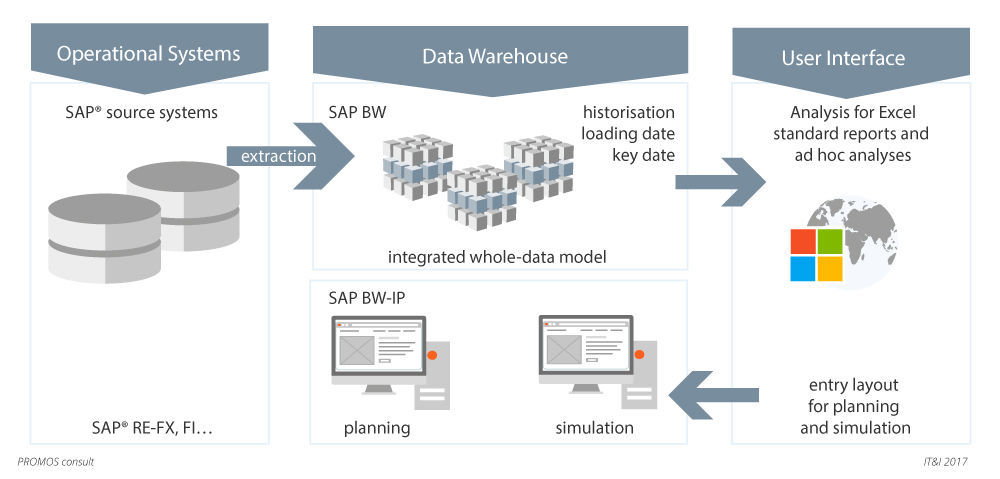
Figure 2: Architecture of the “Plato” solution: realisation on the basis of SAP BW and its integrated planning (SAP® BW-IP) as well as the Excel-based frontend tool SAP (Analysis for Excel).
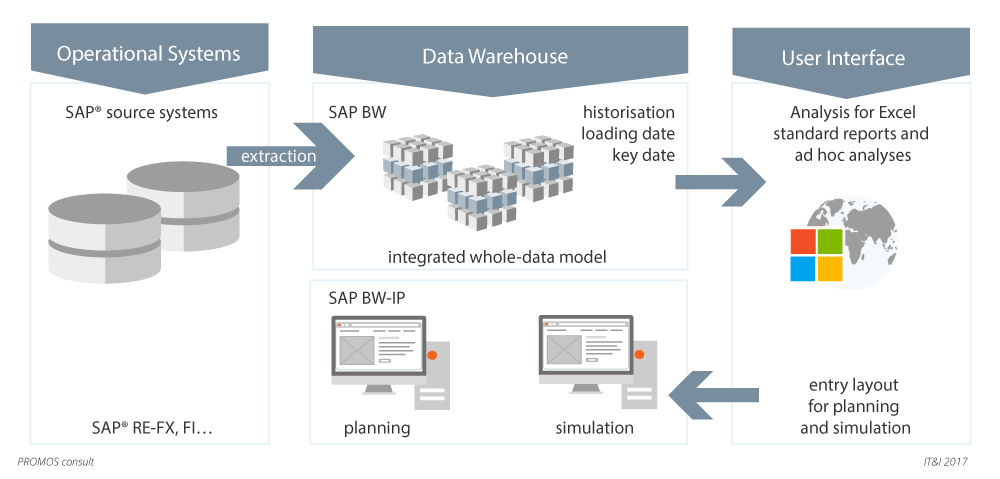 Figure 2: Architecture of the “Plato” solution: realisation on the basis of SAP BW and its integrated planning (SAP® BW-IP) as well as the Excel-based frontend tool SAP (Analysis for Excel). |
VWI decided on property-based planning, and thus against a version that was purely account based. The properties correspond to individual profit centres, the scope of which is determined in the department in question. Thus, the budgets for marketing or IT products are separate profit centres, as is the project development for a new logistics hall. As well as the already completed, current and long-term planning calculations for construction and maintenance projects, inventory information such as contractual rents, depreciation and financing services are included in the planning. All of this data comes from the ERP software, which now serves as a central data entry and processing platform or is recorded as new plan data. “Plato” also has an integrated comment function that allows authorised users to add explanations to the individual items.
The challenge of balance sheet planning
Balance sheet planning is now performed starting from the last completed balance sheet and on the basis of the planned profit and loss account. Within balance sheet planning, all occurring transactions are now collected within the same user interface. For this, a parallel, overarching, overall balance sheet had to be created for the various departments and projects assigned to the profit centres. This is set up so that it can be included unmodified as a VWI balance sheet in the automotive-based Group reporting and the reporting of VW Financial Services AG, parts of which are subject to the BaFin regulations. The final version of the balance sheet report that is sent to the Group can no longer be modified within “Plato”.
An example from practice
An example for a possible profit centre is project development of a storage hall for replacement parts. The master data, containing details of the location, BGF, land, etc. are integrated directly into “Plato” from the ERP system. The next step is linking with loan planning and the corresponding credit and interest conditions. Data regarding the rent in accordance with the contractual conditions can also be maintained at this point. The construction costs are conveniently linked with fixed dates in the schedule. Calculation logic stored in the planning tool is now used to calculate the project through to the end, resulting in a plan calculation at the level of profit and loss accounts and balance sheet accounts.
The planning cycle for the storage hall example property can be steadily continued and enhanced. Details of interest repayment, liabilities, maintenance costs or tax influences such as depreciation transfer postings thus complete the data pool. Each project with its sub-categories can be selected individually in the overall balance sheet, enabling the cause of apparent incorrect calculations and conspicuous deviations from the previous years’ plans to be discovered with ease.
High user acceptance and flexible enhancement options
There were two options for the design of the “Plato” user interface: a web interface and an Excel-based interface, whereby the Excel structure was preferred as the Controlling department was already familiar with it (Figure 3). This relates solely to the user interface – Excel files have been omitted entirely. In addition, immediate access to archived planning data and current project data as well as the flexible modification options for “Plato” contribute to the high level of user acceptance. Expansion to VWI’s asset and portfolio management is already being planned.
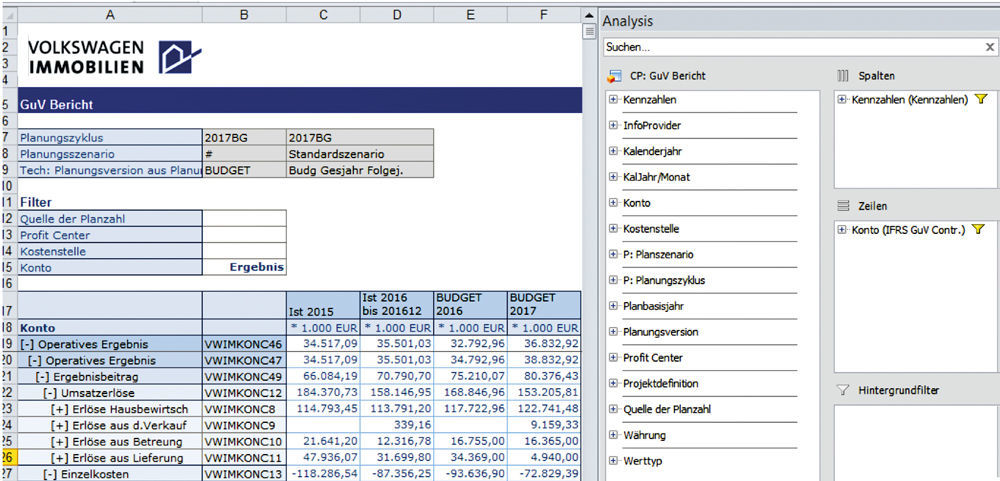
Figure 3: Example of a profit and loss report in “Plato”. The familiar Excel environment makes its use for reporting significantly easier.
The key difference to the initial situation is clearly the implementation of the single source of truth principle. As all data is recorded centrally and parallel structures are omitted, it is possible to track workflow processes such as project calculations back to their origin and immediately determine which employee is responsible. From the design phase until it went live, the implementation duration for “Plato” was just six months. In the interim, small, selected VWI teams worked together with the PROMOS project management to detect any errors and optimisation possibilities in the test and quality assessment system. In this way, the transition to general use was possible without any additional effort or complications. Over the coming years, optimisation proposals will be taken into account in the scope of updates or additional solutions.
redaktion@openpromos.de
